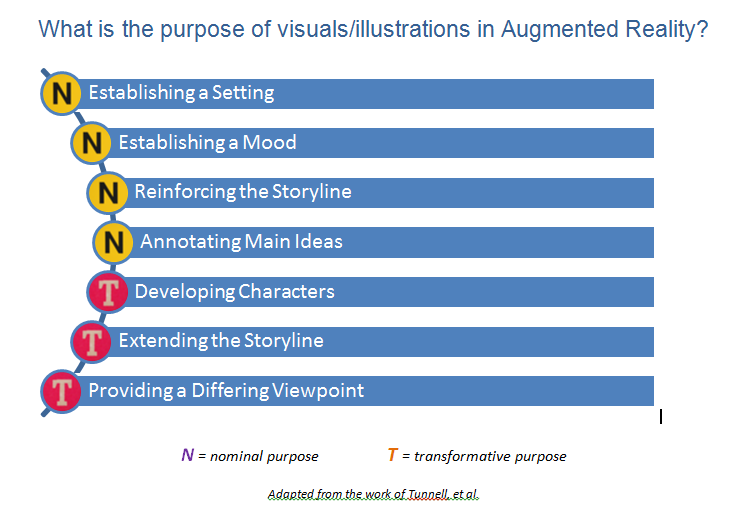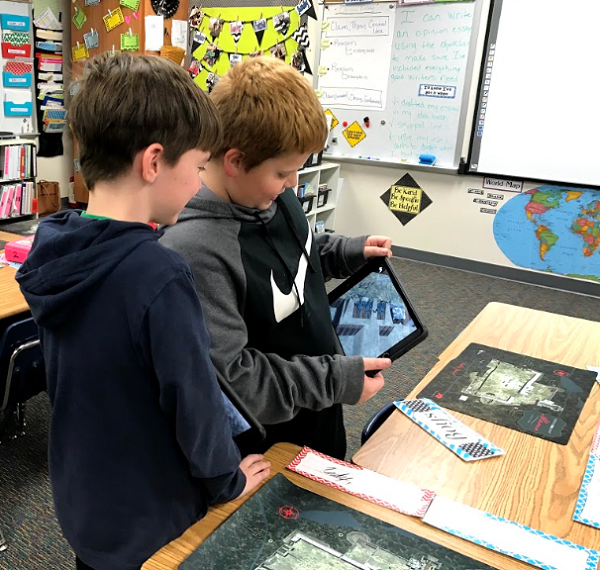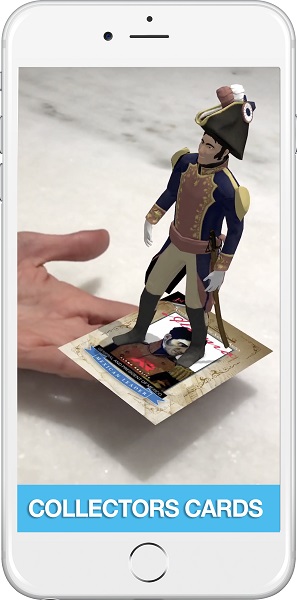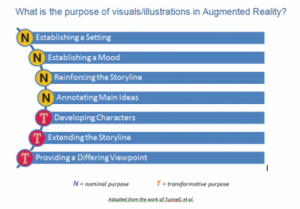In a distant corner of the massive exhibit hall, crowds of educators crammed themselves into a small booth, and this went on uninterrupted, day after day. It was difficult to get face time with the few company representatives manning the booth, no doubt understaffed for the circumstances.

Part of the reason for the teeming throngs of educators was the nature of the product, one which featured the history of the Alamo, a required subject in Texas history classes. And it could only help that the conference, TCEA 2019, was located only a few blocks from the actual grounds of the Alamo in the hospitable cityscape of San Antonio, Texas. But the real reason educational customers came and stayed too long was that the augmented reality content on display was substantially different than most AR educational content.
In a previous article, I described how educator Dr. Marybeth Green (Associate Professor of Instructional Technology and Graduate Coordinator for the Instructional Technology Program at Texas A&M University-Kingsville) recently came to a stark realization:
“It occurred to me that teachers don’t really know how to use the affordances of [AR], because it is so new. It’s a definite growth area for our profession. Not only should we define metacognitive strategies for kids using AR, we should also define ways in which teachers can make use of the affordances of [AR]”.
With that challenge in mind, Dr. Green began making some interesting connections. Since AR uses visual images to convey story elements much in the same way illustrations in a children’s book assist a vital storyline. Dr. Green found some interesting scholarly work on how 2D illustrations in children’s picture books fulfill specific literary purposes. (See Tunnell, M. O., Jacobs, J. S., Young, T. A., & Bryan, G. (2016). Children’s literature, briefly. Boston: Pearson.) She began to think in terms of applying the ideas in this book in two new ways: as a framework for a) evaluating high potential AR/MR resources for the classroom and b) helping teachers know exactly how to use AR/MR in the classroom in the most effective ways.
Adapting the ultimate purposes of book illustration proposed by Tunnell, et al., Dr. Green envisions the following ways in which AR/MR can be leveraged to visual advantage:

Dr. Green postulated that AR/MR products aimed at more transformative uses, and not nominal uses, may prove more effective with educators. That was perhaps the reason why the crowds thronged the Experience Real History (ERH) booth at TCEA 2019. Augmented reality was being employed in more transformative ways: to richly develop characters, to extend and personalize the storyline through physical movement, and to provide differing viewpoints.

Experience Real History (ERH), an immersive technology company based in San Antonio, Texas, specializes in “storytelling in the non-linear?medium of augmented reality.” They produce apps, tabletop ‘reality’ mini-boards, ‘reality’ character cards, and augmented reality books that tell stories in unique and powerful ways. Here’s how the ‘transformative’ encounters work:
 Developing Characters. A set of collectible playing cards come alive with augmented reality as students are introduced to not just the individuals and personalities playing pivotal roles, but lesser known characters that add to the Alamo experience.
Developing Characters. A set of collectible playing cards come alive with augmented reality as students are introduced to not just the individuals and personalities playing pivotal roles, but lesser known characters that add to the Alamo experience.
Extending the Storyline. The storyline is pushed beyond the boundaries of what students can typically read and hear through visualized and kinesthetic (movement) encounters. For example, the app delivers a 360 walkthrough experience of the Alamo, allowing students to zoom into the past and physically walk the entire exterior and interior of the Alamo grounds. Lots of space is required. Students are able to enter narrated summaries by simply stepping on a portal (blue disk) in front of them and there are fourteen portals in the walkthrough experience. The storyline is also extended through rich visualization: animated reenactments of key episodes of the Alamo siege. These can be viewed on tabletop ‘reality’ mats, a very student-friendly approach.
Providing Differing Viewpoints. The personalities and reenactments of the Alamo experience are provided from various perspectives: the defenders, the soldados, the women, and the slaves. Again, augmented reality makes each of these viewpoints come alive.
 Now if an Alamo historical episode doesn’t quite excite you, there’s much more on the way. Experience Real History (ERH) is working behind the scenes on the battle of Gettysburg (available June, 2019) and other historical explorations. Future work in the arenas of science and geography may be coming. Currently, these products have been used by upper elementary and middle school students. All of the experiences work on both Android and Apple, with the exception of the portal feature, which is only available on Apple devices. But the important lesson here is how to design augmented reality experiences more effectively to appeal to the education market. –Len Scrogan
Now if an Alamo historical episode doesn’t quite excite you, there’s much more on the way. Experience Real History (ERH) is working behind the scenes on the battle of Gettysburg (available June, 2019) and other historical explorations. Future work in the arenas of science and geography may be coming. Currently, these products have been used by upper elementary and middle school students. All of the experiences work on both Android and Apple, with the exception of the portal feature, which is only available on Apple devices. But the important lesson here is how to design augmented reality experiences more effectively to appeal to the education market. –Len Scrogan

